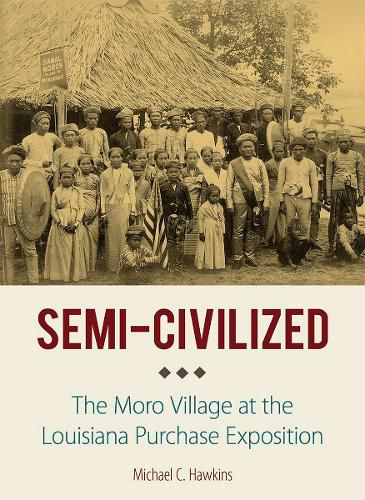Readings Newsletter
Become a Readings Member to make your shopping experience even easier.
Sign in or sign up for free!
You’re not far away from qualifying for FREE standard shipping within Australia
You’ve qualified for FREE standard shipping within Australia
The cart is loading…






Semi-Civilized offers a concise, revealing, and analytically penetrating view of a critical period in Philippine history. Michael C. Hawkins examines Moro (Filipino Muslim) contributions to the Philippine exhibit at the St. Louis World’s Fair in 1904, providing insight into this fascinating and previously overlooked historical episode.
By reviving and contextualizing Moro participation in the exposition, Hawkins challenges the typical manifestations of empire drawn from the fair and delivers a nuanced and textured vision of the nature of American imperial discourse. In Semi-Civilized Hawkins argues that the Moro display provided a distinctive liminal space in the dialectical relationship between civilization and savagery at the fair. The Moros offered a transcultural bridge. Through their official yet nondescript designation as semi-civilized, they undermined and mediated the various binaries structuring the exposition. As Hawkins demonstrates, this mediation represented an unexpectedly welcomed challenge to the binary logic and discomfort of the display.
As Semi-Civilized shows, the Moro display was collaborative, and the Moros exercised unexpected agency by negotiating how the display was both structured and interpreted by the public. Fairgoers were actively seeking an extraordinary experience. Exhibit organizers framed it, but ultimately the Moros provided it. And therein lay a tremendous amount of power.
$9.00 standard shipping within Australia
FREE standard shipping within Australia for orders over $100.00
Express & International shipping calculated at checkout
Semi-Civilized offers a concise, revealing, and analytically penetrating view of a critical period in Philippine history. Michael C. Hawkins examines Moro (Filipino Muslim) contributions to the Philippine exhibit at the St. Louis World’s Fair in 1904, providing insight into this fascinating and previously overlooked historical episode.
By reviving and contextualizing Moro participation in the exposition, Hawkins challenges the typical manifestations of empire drawn from the fair and delivers a nuanced and textured vision of the nature of American imperial discourse. In Semi-Civilized Hawkins argues that the Moro display provided a distinctive liminal space in the dialectical relationship between civilization and savagery at the fair. The Moros offered a transcultural bridge. Through their official yet nondescript designation as semi-civilized, they undermined and mediated the various binaries structuring the exposition. As Hawkins demonstrates, this mediation represented an unexpectedly welcomed challenge to the binary logic and discomfort of the display.
As Semi-Civilized shows, the Moro display was collaborative, and the Moros exercised unexpected agency by negotiating how the display was both structured and interpreted by the public. Fairgoers were actively seeking an extraordinary experience. Exhibit organizers framed it, but ultimately the Moros provided it. And therein lay a tremendous amount of power.